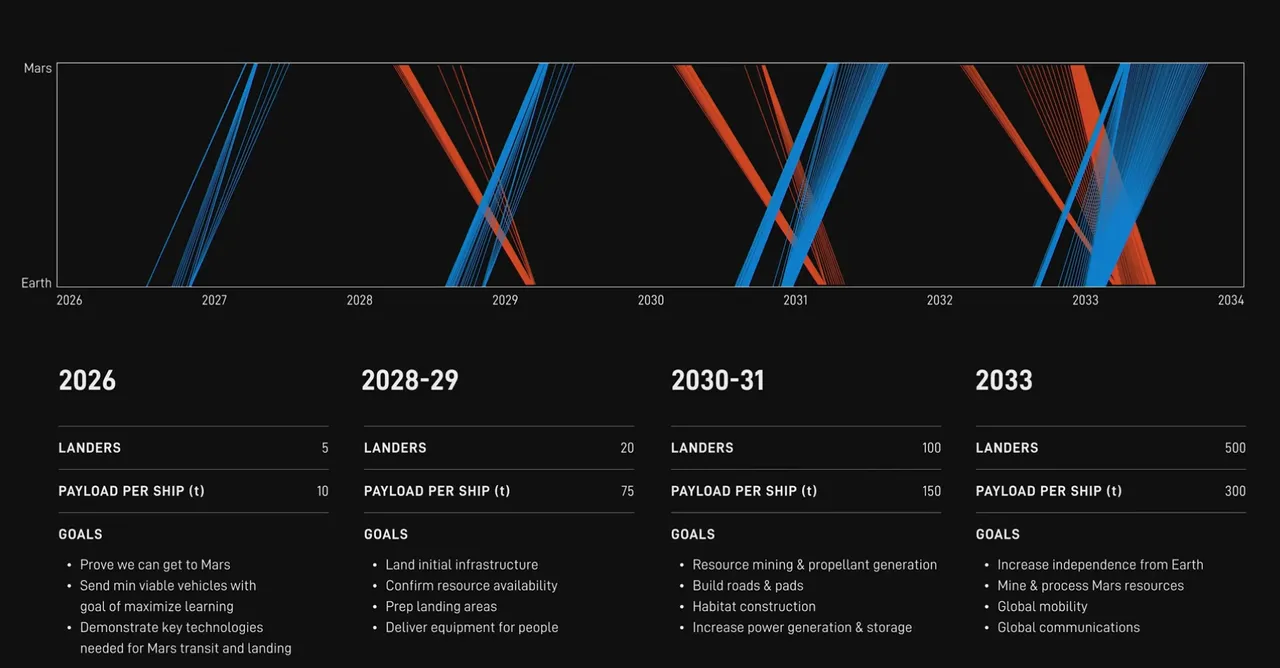Overview of SpaceX's progress toward Mars colonization, including production goals, Starlink developments, and technical advancements.
The Road to Making Life Multiplanetary: an update from @elonmusk on SpaceX's plan to reach Mars pic.twitter.com/d2cnsVKK80
— SpaceX (@SpaceX) May 29, 2025
Production
- Current production: One Starship every 2-3 weeks.
- Goal: Produce 1,000 Starships annually (approximately 3 per day) across two facilities in Texas and Florida.
- For comparison:
- Boeing delivered 348 commercial airplanes in 2024. Source: Boeing Investor Relations
- Airbus delivered 766 commercial airplanes in 2024. Source: Airbus Press Release
Starlink V3
- Planned production: 5,000 Starlink V3 satellites per year, each comparable in size to a Boeing 737.
- For comparison:
- Starlink V2, designed for Starship deployment, has a mass of 1,250 kg and a length of 7 meters. Source: Wikipedia - Starlink
- Boeing 737-700 dimensions: 35.8-meter wingspan, 33.6-meter length. Source: Boeing 737 Technical Specs
Reuse
- Goal: Reuse a booster within 1-2 hours of landing by catching, placing on the launch pad, refueling in 30-40 minutes, stacking a Starship, and relaunching.
- Plan to demonstrate booster catching within 2-3 months.
- Starlink terminals feature Mars transfer trajectory diagrams, as Starlink revenue supports the Mars mission.
Orbital Refilling
- Planned demonstration of orbital refilling in 2026.
- If successful, SpaceX aims to send an uncrewed mission to Mars by the end of 2026, aligning with the Earth-Mars transfer window every 26 months.
Reliable Heat Shield
- Developing a heat shield to withstand Mars' carbon dioxide atmosphere, which produces more free oxygen as plasma, increasing oxidation compared to Earth’s atmosphere.
- Estimated timeline: Several years to perfect a reliable material.
Comparing Starship Versions
| Version | Booster Height (m) | Ship Height (m) | Ship Payload (t) |
|---|---|---|---|
| V1 | 69 | 50 | 100–150 |
| V2 | 71 | 52 | 100–150 |
| V3 | 73 | 52 | 100–150 |
| V4 | 81 | 61 | 200 |
- Planned launch of Booster and Ship V3 by the end of 2025.
Roadmap to Mars
- Estimated mass required for a self-sustaining Mars civilization: 1 million to 10 million tons.
